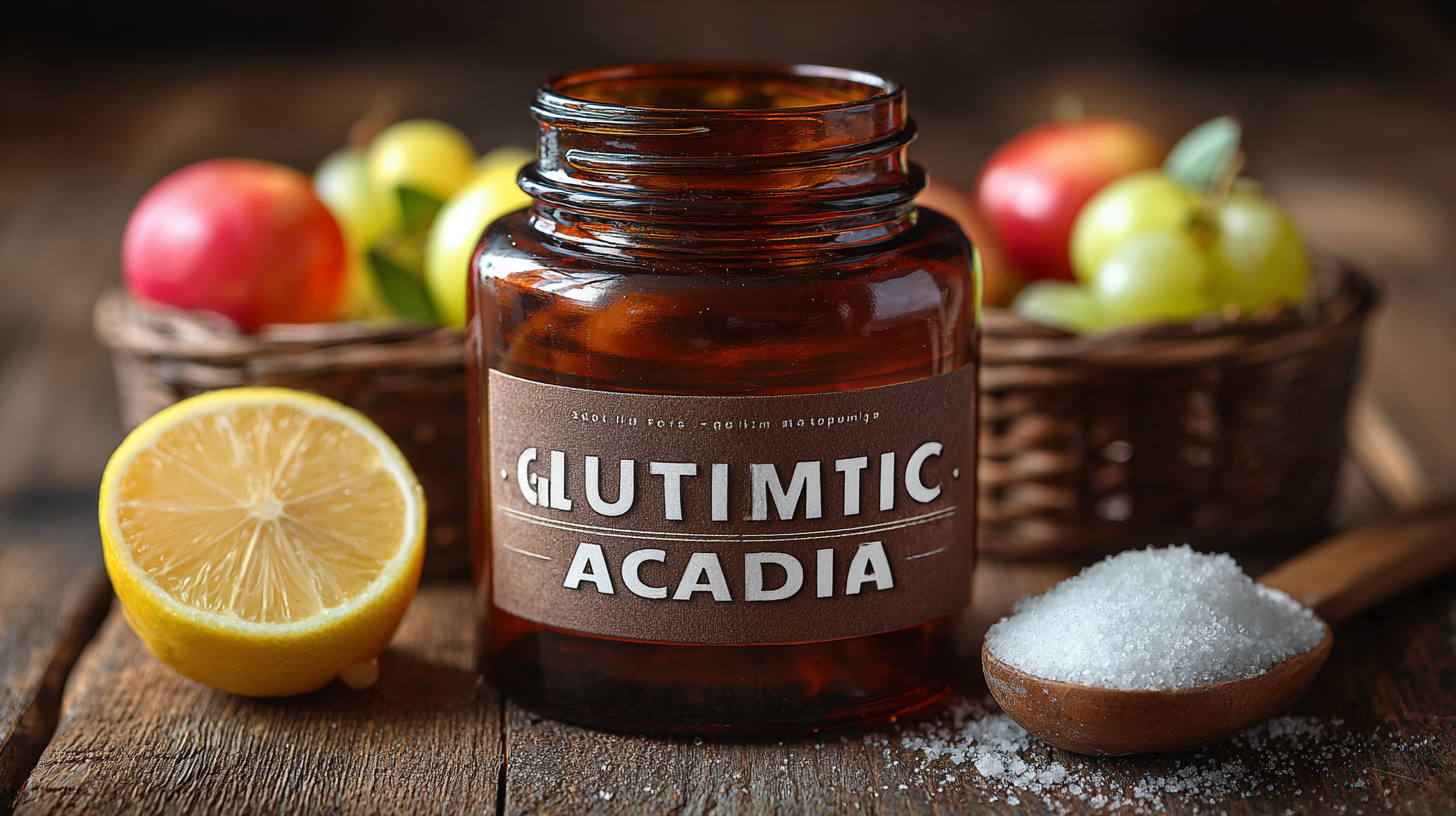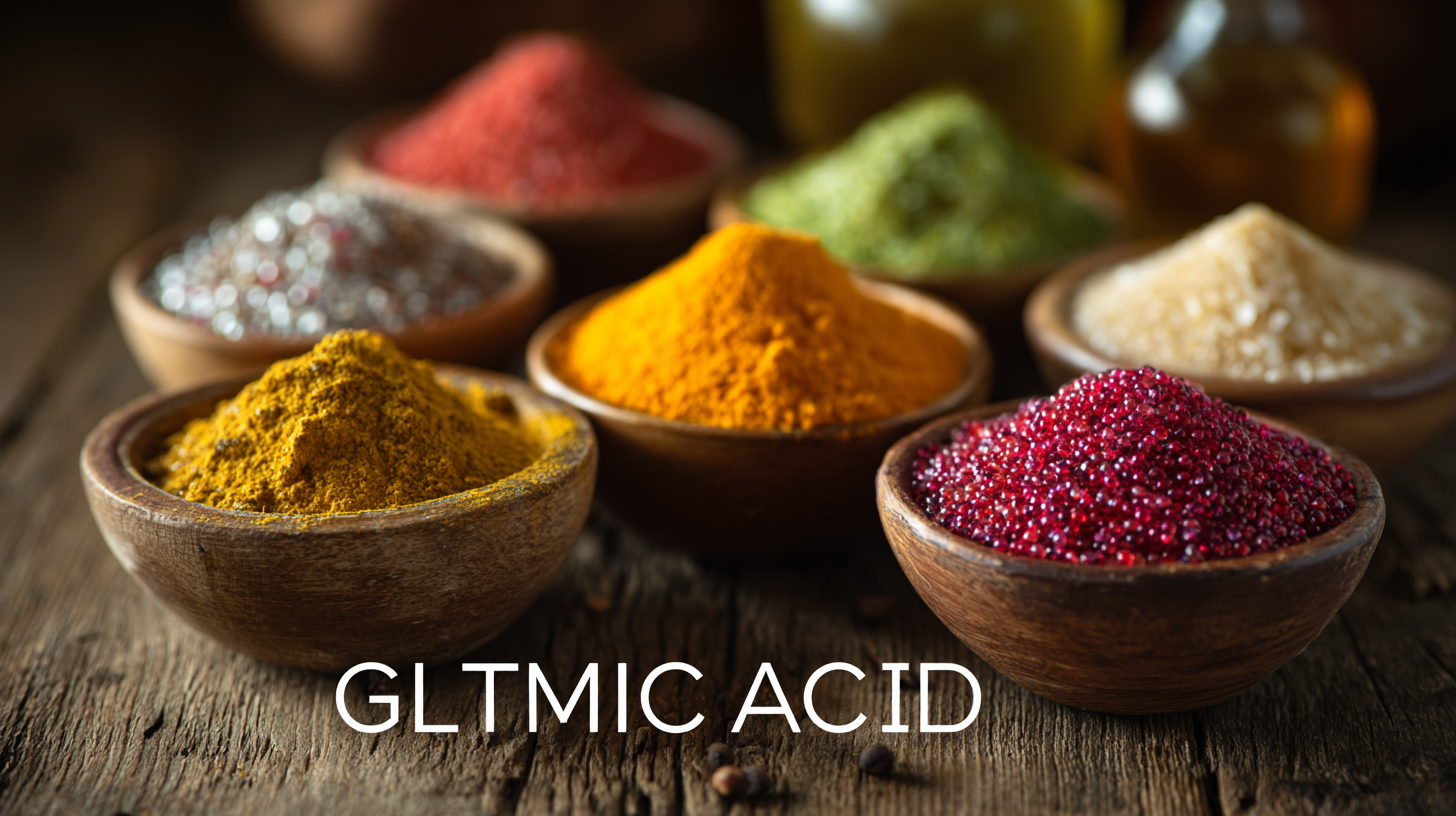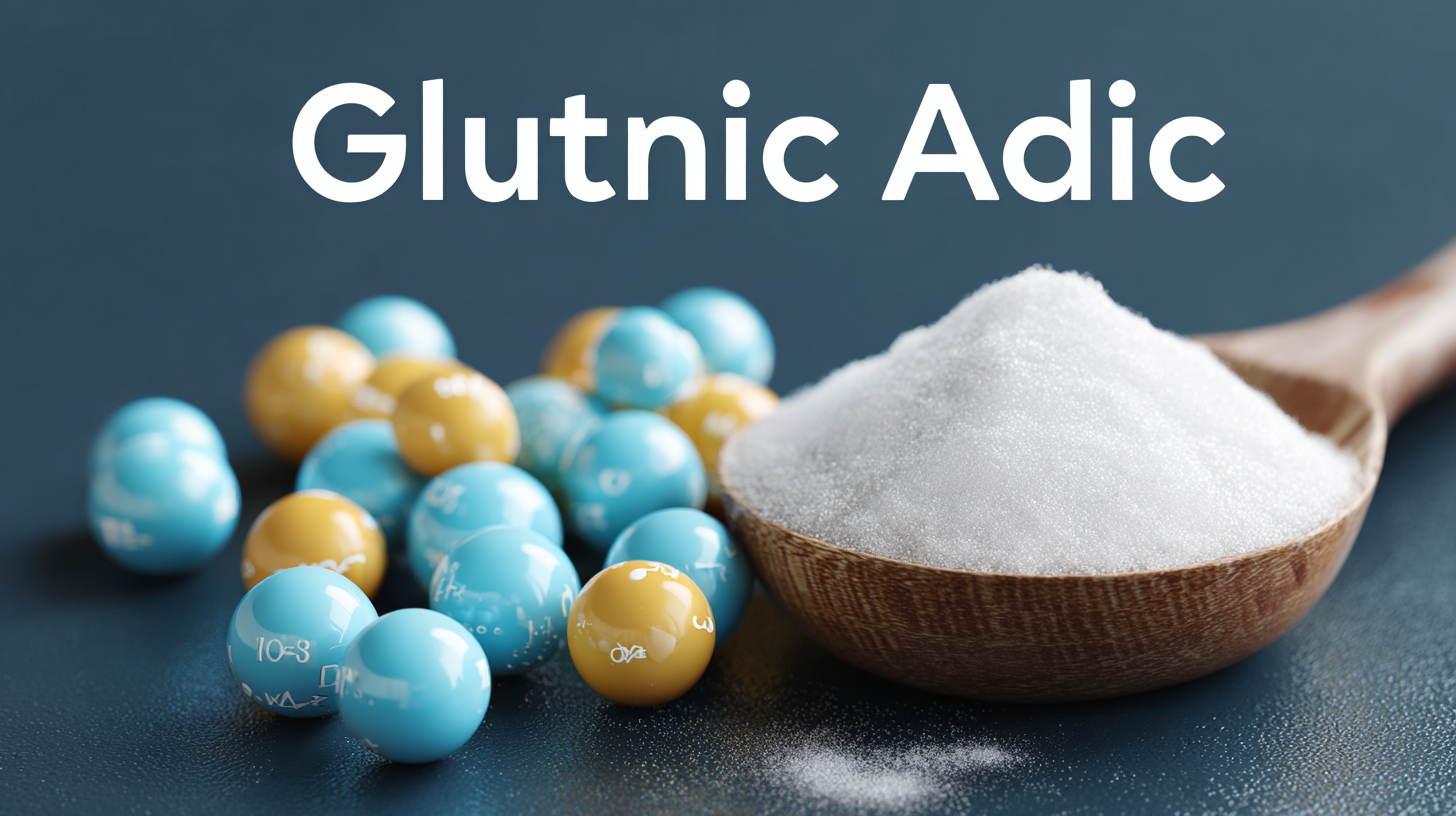Navigating the Global Market for Best Glutamic Acid Ultimate Guide to Finding Quality Suppliers
In recent years, the global market for Glutamic Acid has witnessed substantial growth, driven by its diverse applications in food, pharmaceuticals, and animal feed industries. According to a report by Grand View Research, the global glutamic acid market is expected to reach USD 6.5 billion by 2025, growing at a CAGR of 4.5%. This surge in demand highlights the importance of sourcing high-quality Glutamic Acid from reliable suppliers. As businesses aim to navigate this competitive landscape, understanding the nuances of supplier selection becomes critical. In this ultimate guide, we will delve into essential strategies for identifying quality suppliers, emphasizing the significance of expertise, production capabilities, and compliance with international standards. With "实力工厂,中国制造,出口全球," we reflect the strength and reliability of Chinese manufacturers in meeting the global demand for top-tier Glutamic Acid products.

Understanding Glutamic Acid: A Comprehensive Overview of Its Uses and Benefits
 Glutamic acid, an amino acid that plays a vital role in various biochemical processes, is widely recognized for its applications in food, nutrition, and pharmaceuticals. As a key ingredient in the synthesis of proteins, it contributes significantly to the growth and repair of tissues. In the culinary world, glutamic acid is known for enhancing flavors, famously found in monosodium glutamate (MSG), which elevates the umami taste, making dishes more savory and enjoyable.
Glutamic acid, an amino acid that plays a vital role in various biochemical processes, is widely recognized for its applications in food, nutrition, and pharmaceuticals. As a key ingredient in the synthesis of proteins, it contributes significantly to the growth and repair of tissues. In the culinary world, glutamic acid is known for enhancing flavors, famously found in monosodium glutamate (MSG), which elevates the umami taste, making dishes more savory and enjoyable.
Beyond its flavor-enhancing properties, glutamic acid also serves numerous health benefits. It acts as a neurotransmitter, facilitating communication between nerve cells, which can support cognitive function and alleviate symptoms of anxiety and depression. Additionally, its role in metabolic processes aids in energy production and muscle recovery, making it a popular supplement among athletes. Understanding the multifaceted uses and advantages of glutamic acid is crucial for businesses and consumers alike, as it opens pathways to healthier dietary choices and innovative product formulations.
Key Factors to Consider When Choosing Quality Glutamic Acid Suppliers
When selecting quality glutamic acid suppliers, several key factors should be taken into account. Firstly, the supplier’s reputation in the industry is paramount. Researching reviews, testimonials, and their history can provide insight into their reliability and the quality of their products. A reputable supplier will often have accreditations and compliance with international standards, which can serve as indicators of their commitment to quality.
Another crucial aspect is the supplier’s production processes and quality control measures. Understanding how glutamic acid is manufactured, including the raw materials used and the technology involved, can significantly impact the final product's quality. Suppliers that prioritize sustainable practices and adhere to stringent safety regulations often yield higher quality ingredients. Additionally, engaging in dialogue with potential suppliers regarding their testing procedures can ensure that the glutamic acid meets your specific requirements and maintains consistency in quality.
The Role of Quality Control in Glutamic Acid Production and Supply Chains
Quality control is a critical component in the production and supply chains of glutamic acid, influencing not only the safety and efficacy of the product but also its market competitiveness. Implementing rigorous quality control measures ensures that glutamic acid meets the required purity standards, which is essential given its widespread use in food, pharmaceuticals, and animal feed. Quality control processes involve thorough testing of raw materials, regular monitoring during production, and final product inspections to verify compliance with international regulations.
Additionally, maintaining quality throughout the supply chain helps to build trust among suppliers and buyers. This includes establishing clear communication channels and collaboration between manufacturers and suppliers to identify potential quality issues early in the process. Furthermore, adopting certifications such as ISO standards can enhance a supplier's credibility and facilitate smoother transactions. In this global market, where consumers are more aware of product quality, emphasizing quality control not only safeguards the integrity of glutamic acid but also strengthens the overall supply chain, paving the way for sustainable growth and customer satisfaction.
Navigating the Global Market for Best Glutamic Acid Ultimate Guide to Finding Quality Suppliers
| Supplier Region | Production Capacity (Metric Tons/Year) | Quality Assurance Certifications | Average Price (USD/Kg) | Lead Time (Days) |
|---|---|---|---|---|
| North America | 50,000 | ISO 9001, HACCP | 5.00 | 30 |
| Europe | 75,000 | ISO 22000, FSSC 22000 | 4.80 | 25 |
| Asia-Pacific | 100,000 | GMP, ISO 14001 | 3.50 | 20 |
| South America | 30,000 | ISO 9001 | 5.50 | 40 |
Exploring Market Trends: The Demand for High-Quality Glutamic Acid Globally
As the global market for amino acids continues to expand, the demand for high-quality glutamic acid is rising significantly. With the amino acid market projected to reach $63.95 billion by 2033, glutamic acid plays a crucial role in various applications, including food, dietary supplements, and pharmaceuticals. The increasing need for processed and convenient foods is a major driver of growth in this segment. Moreover, as health awareness escalates, consumers are looking for high-quality ingredients to support their wellness goals.
**Tips**: When searching for reliable suppliers, ensure they provide transparent sourcing practices and product quality certifications. Look for suppliers who invest in research and development to stay ahead of market trends, as this indicates a commitment to quality. Additionally, consider suppliers that offer diverse product lines, including plant-based options, which are becoming increasingly popular among consumers.
The Cocoyl sodium glutamate market is also noteworthy, with projections indicating a market size growth from $5.5 billion in 2025 to $4.3 billion by 2033, reflecting a robust CAGR of 3.2%. As globalization fosters interconnected supply chains, suppliers must adapt to the evolving landscape influenced by regional dietary preferences and health trends. Monitoring these trends will be vital for businesses aiming to thrive in this competitive market.

Building Long-Term Relationships with Reliable Suppliers in the Glutamic Acid Industry
Building long-term relationships with reliable suppliers in the glutamic acid industry is crucial for businesses aiming to thrive in a competitive market. According to a recent report from MarketsandMarkets, the global glutamic acid market is projected to grow at a CAGR of 4.5% from 2020 to 2025. As the demand for umami flavor enhancers and vegan-friendly food products rises, companies must strategically align themselves with suppliers who not only provide quality products but also share the same vision for innovation and sustainability.
Establishing trust and maintaining open lines of communication are key to fostering these long-term partnerships. Tips for building these relationships include regularly visiting supplier facilities to understand their production capabilities and sharing market insights that can help both parties stay ahead of trends. Additionally, conducting periodic performance assessments based on quality, delivery, and pricing can ensure that the partnership remains mutually beneficial and aligned with evolving market needs.
Lastly, consider collaborating on sustainability initiatives as consumers increasingly prioritize eco-friendly practices. According to a report by Grand View Research, the demand for sustainable products is influencing supplier choices; therefore, working together on reducing environmental impact can strengthen your relationship while appealing to a broader customer base.





